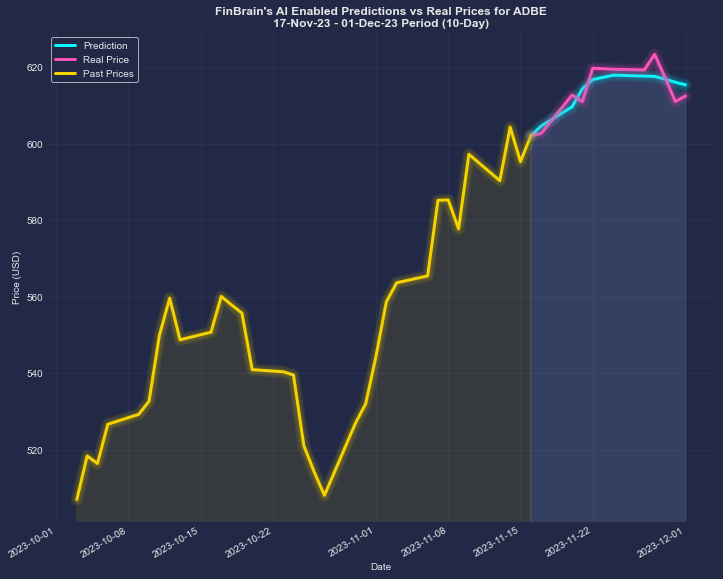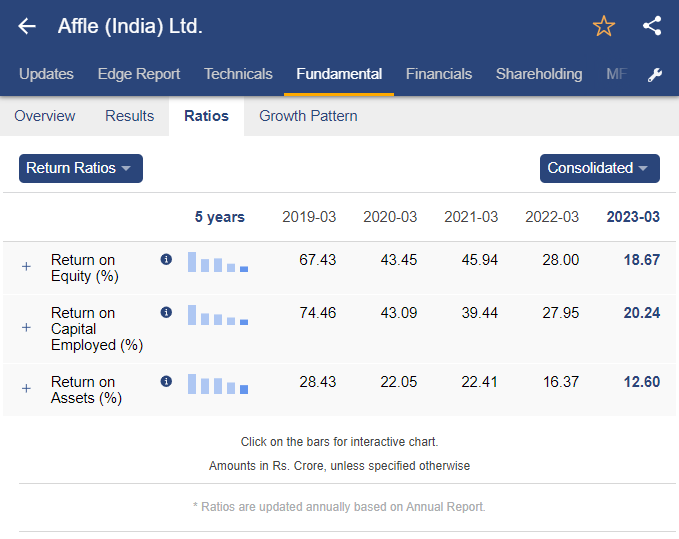20 Best Suggestions For Picking AI Stock Analysing Sites
20 Best Suggestions For Picking AI Stock Analysing Sites
Blog Article
Top 10 Tips To Evaluate The Market Coverage Provided By Ai-Powered Stock Predicting/Analyzing Platforms
Market coverage is a critical aspect to consider when looking at AI platform for predicting or analyzing stocks which determines the breadth and depth of assets and markets which you have access to. A platform with extensive market coverage can allow you to diversify portfolios, explore global trading opportunities and adapt to various strategies. These are the 10 best ways to evaluate the market coverage provided by these platforms.
1. Evaluate Supported Asset Classes
Stocks - Ensure that the platform is able to provide coverage of major markets for stocks (e.g. NYSE NASDAQ LSE HKEX) as well as includes small-caps, mid-caps and large-caps.
ETFs Make sure the platform allows you to select from a wide range of ETFs that will give you diversified exposure.
Options and Futures: Determine whether the platform allows derivatives such as options, futures and other products with leverage.
Forex and commodities. Check if the platform has forex pairs as well as base and precious metals, energy products and agricultural commodities.
Cryptocurrencies Check whether the platform supports popular cryptocurrencies such as Bitcoin, Ethereum, and altcoins.
2. Make sure that your area is covered
Global markets. Make sure your platform is able to cover the major global market that includes North America Europe Asia-Pacific and emerging countries.
Regional focus: Check whether the platform is focused on particular market segments or regions that match your trading preferences.
Local exchanges: Make sure you know whether the platform supports local or regional exchanges relevant to your location or strategy.
3. Assess Real-Time and. Delayed Data
Real-time data - Make sure your platform is able to provide real-time market information to help you make timely choices, especially for active traders.
The data is delayed. Check if the delayed data is available for free or at a lower cost, which may suffice for investors who are looking to invest long-term.
Data latency: Verify whether the platform is able to reduce latency for real-time data feeds especially in high-frequency trading.
4. Review the availability of historical data
Historical data depth If the platform is available, ensure that it has vast historical data (e.g., 10+ years) for backtesting and analysis.
Find out the granularity in historical data.
Corporate actions - Check historical data to ensure that it includes stock splits or dividends as well as other corporate activities.
5. Verify the market depth and order book data
For better price discovery make sure that the platform is equipped with Level 2 data.
Find out if there is a real-time bidding system and asking spreads. This will help ensure that the pricing is correct.
Volume data: Make sure that the platform includes extensive volume data that can be used to analyze liquidity and market activity.
6. Review the coverage to determine Indices and Sectors
Major indices: Make sure that the platform has important benchmarking indices, index-based strategies, and other purposes (e.g. S&P 500, NASDAQ 100, FTSE 100).
Industry-specific data: If you want to do a more targeted analysis, look into whether there are data available for specific sectors.
Custom indices. See if it is possible to create or monitor custom indices based on your criteria.
7. Evaluate Integration with Sentiment and News Data
News feeds: Ensure the platform is able to integrate real-time news feeds from reputable sources (e.g., Bloomberg, Reuters) for events that affect the market.
Sentiment analysis: See whether the platform has sentiment analysis tools based on news, social media or other data sources.
Trades driven by events: Confirm the platform's support of trading based on events (e.g. announcements on economic data or earnings announcements).
8. Test for Multi-Market Trading
Cross-market trading: Make sure the platform allows trading across multiple markets and asset classes from one interface.
Conversion to currency Check if you can convert currencies in a way that is automatic to international trades, and if there are multiple currency options for your account.
Support for time zones: Check whether your platform permits you to trade in different time zones.
9. Check the coverage of alternative sources
Alternative data: For unique insights, check if your platform uses alternative data (e.g. satellite imagery Web traffic, satellite imagery card transactions).
ESG data - Verify that the platform is able to provide environmental, social, and governance data (ESG). This is important for the socially conscious investment.
Macroeconomic data: Ensure the platform has macroeconomic indicators (e.g., inflation, GDP, or interest rates) for analysis of fundamentals.
10. Review User Feedback and Market Reputation
User reviews: Search for feedback from users to gain a better understanding of the platform.
Verify the credibility of the platform in relation to its coverage and awards.
Find testimonials that prove the effectiveness of the platform in particular markets and asset classes.
Bonus Tips
Trial period: Use the demo or trial version for free to evaluate the platform's market coverage and data quality.
API access Check whether the API of the platform allows custom analysis with market data.
Customer support: Make sure the platform is able to assist you with any market-related queries or issues with data.
Check these points to determine the market coverage provided by AI stock trading platforms. Choose a platform with access to the market, data and tools that you need for successful trading. Market coverage that is comprehensive allows investors to diversify their portfolios, explore new opportunities, and adapt to changing market conditions. See the top rated using ai to trade stocks advice for site recommendations including best ai trading app, ai trading platform, ai chart analysis, investing ai, ai trading bot, trading with ai, best ai trading app, stock market ai, incite ai, best ai stocks and more.
Top 10 Tips To Evaluate The Risk Management Of Ai Stock Predicting/Analyzing Trading Platforms
Risk management is an important component of every AI trading platform. It assists in protecting your investment while minimizing the risk of losses. A platform that has robust tools for managing risk will assist you in navigating the volatile market and enable you to make educated choices. Below are the top 10 tips to evaluate the risk management capabilities of these platforms:
1. Review Stop-Loss and take-profit features
Customizable settings: Make sure you can set the maximum take-profit and stop-loss levels for certain trades.
Trailing stops: Check if your platform supports trailing stops that are automatically adjusted as the market shifts in your direction.
Guarantees on stop-loss: whether the platform offers stop-loss guarantees, which will ensure that your position will be closed at a specific price in even volatile markets.
2. Use Position Sizing Tools to Assess Positions
Fixed amount. You should have the option to define your positions' sizes in terms of the fixed dollar amount.
Percentage of Portfolio: Decide whether it is feasible to define the size of your position in percentage of the total portfolio so that you can manage risk in a proportional way.
Risk-reward ratio: Determine whether the platform can set risk-reward ratios for individual trades or strategies.
3. Check for Diversification Support
Multi-asset Trading to diversify your portfolio of investments, be sure that the trading platform you select supports trading in multiple asset classes.
Sector allocation Check to see what tools are that allow for monitoring and managing exposure to the sector.
Diversification of geographic risk: Check if the platform permits trading on international markets to spread geographic risk.
4. Review leverage control and margins.
Margin requirement: Verify that the platform is clear about any margin requirements that apply to leveraged trades.
Limits on leverage: See whether the platform allows users to set leverage limits to manage risk exposure.
Margin call - Check to see if your platform alerts you to margin calls promptly. This can help avoid liquidation.
5. Assessment Risk Analytics and reporting
Risk metrics: Make sure the platform provides key risk metrics (e.g. Value at Risk (VaR) Sharpe ratio drawdown) to your portfolio.
Analysis of scenarios: Make sure that the platform allows you to simulate different scenarios of the market to assess the risk.
Performance reports: Ensure the platform provides you with detailed information on the performance of your investments, including returns that are risk adjusted.
6. Check for Real-Time Risk Monitoring
Monitoring of portfolios - Make sure that the platform you select has real-time monitoring in order to ensure your portfolio is safe.
Alerts: Make sure you receive real-time alerts for risk related (e.g. Stop-loss triggers or margin breaches).
Look for dashboards with customizable options that will give you a snapshot of your risk profile.
7. Tests of Backtesting and Stress Evaluation
Stress testing. Make sure that the platform allows for you to stress test the portfolio or strategy under extreme market conditions.
Backtesting. Find out if the platform permits backtesting, which involves the use of data from the past to determine risk and performance.
Monte Carlo Simulations: Check if the platform utilizes Monte Carlo simulations in order to analyze and predict a range possible results.
8. Risk Management Regulations Compliance Assessment
Ensure that the platform meets the regulatory compliance requirements (e.g. MiFID II regulations in Europe, Reg T regulations in the U.S.).
Best execution: Check if the platform follows the highest standards of execution, and ensures that transactions are executed at the highest available price to minimize the chance of slippage.
Transparency Verify the platform's transparency as well as the clarity of the disclosure of risks.
9. Verify for User Controlled Risk Parameters
Custom risk rules for your business - Make sure the platform permits for you to define your own risk management guidelines.
Automated risk control: Verify that the platform implements the risk management guidelines automatically based upon your predefined criteria.
Manual overrides: Make sure that your platform allows manual overrides in emergencies.
Study Case Studies, User Feedback Review Case Studies, User Feedback Case Studies
User reviews: Examine feedback from users to assess the platform's effectiveness at risk management.
Case studies: Look for case studies or testimonials highlighting the risk management capabilities of the platform.
Forums for community members. Find out if the platform is a thriving user-based community where traders exchange risk management strategies and tips.
Bonus Tips
Free trial period: Try the risk management capabilities of the platform using real-world scenarios.
Customer Support: Verify that the platform is able to provide a comprehensive customer support solution in the event of any risk management-related issues or concerns.
Educational resources - Find out whether the platform provides educational resources and tutorials about best practices in risk management.
With these suggestions, you can assess the ability of AI software for analyzing and predicting stocks to control risk. This will ensure you choose a platform that safeguards your investment and reduces any losses that could occur. It is vital to utilize effective risk-management tools for navigating volatile markets. Have a look at the top best free copyright trading bot for blog examples including ai trading platform, stocks ai, best stock analysis website, ai for stock trading, ai stock market, ai stock, investing in ai stocks, stock analysis websites, ai stock prediction, free ai tool for stock market india and more.